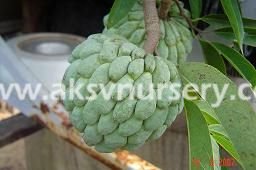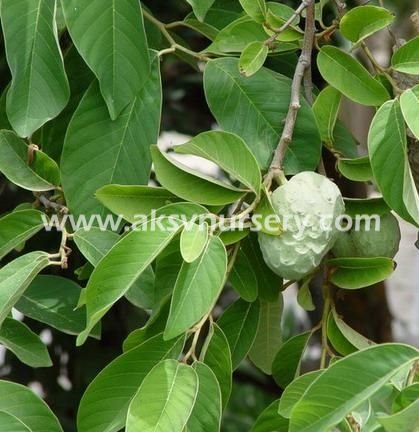Annona cherimola
Family: Annonaceae
Cherimoya, Chirimoya, Custard Apple
Origin: Peru, Ecuador, and Colombia
Commercially grown in Australia, South America, Asia, Spain, Italy, and California. The cherimoya is often considered one of the best-tasting fruits in the world. Its rich and creamy pulp with a sweet fruity flavor, makes an excellent dessert fruit. Almost exclusively eaten fresh, out of hand. The pulp does not store well and the fruit is only available fresh. Seeds are toxic and when crushed can be used as an insecticide. This plant is subtropical and when full-grown can survive to 25F. Young trees are susceptible to frost. Cherimoya prefers a summer temperature of 65-80F, and a winter temperature of 41-65F. Trees are fast-growing, producing fruit from seed in 3-4 years. Flowers are formed in small groups along the branches. A single flower first opens as female, which lasts for 36 hours, followed by a male stage, lasting for another 36 hours. Flowers are almost never pollinated by their own pollen, and without proper pollinators which do not exist outside its native range, cherimoya must be hand pollinated. Tree blooms from late winter to early summer, followed by fruit which ripen from October to May. Fruits are large, from 4-8″ long, and sometimes weighing over 5 pounds. Harvest fruits when skin turns slightly yellow or pale green, or when skin gives a little to touch.




